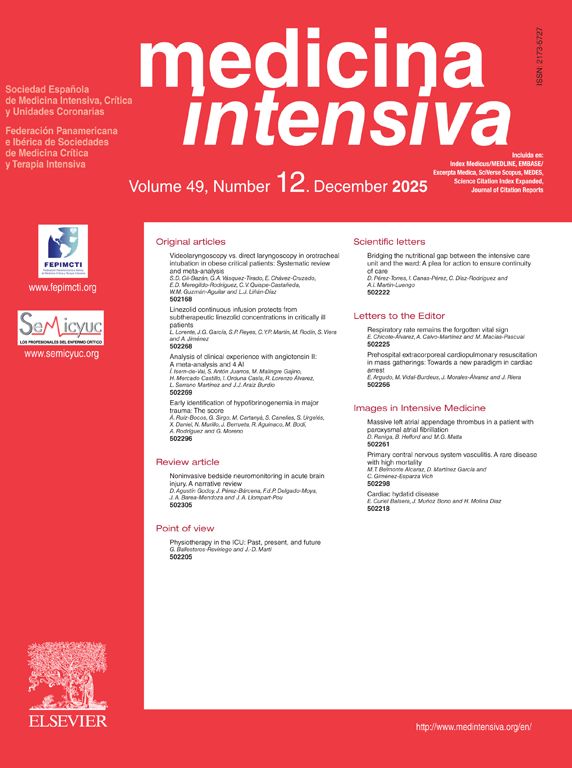The recent article published by Cabrera Losada et al.1 thoroughly addresses the interesting topic of predicting mortality in the critically ill cancer and hematological population. Although they mention the limitations of the population difference (the cancer patient with solid tumors is not the same as the oncohematological patient, not all studies reflect oncological staging, and postoperative processes are not separated from medical complications), we believe it is valuable to reflect on the use of predictive systems given their relevance. Therefore, the critical reading of the article is a recognition of scientific work.
Predictive systems “conceptually” represent the mathematical approach to scientific hypotheses2—if conditions {A, B, C} occur, the probability of death is 55%. That is, we use mathematical formalism to “explain” reality. Thus, if we consider a model as a hypothesis, we must ensure that it adequately fits the reality we want to explain. Furthermore, we must remember that prediction does not allow us to automatically extrapolate a justification for clinical actions.
Therefore, is the reality used in the study the current reality of our units? In our opinion, it is not entirely so, as it is not capable of reflecting all the changes that have occurred in oncology in recent years. This aspect is crucial, as it is precisely scientific advancement, with the corresponding improvement in prognosis, that has driven the change in care and invasive, prolonged support for cancer patients. Scientific progress has facilitated the emergence of new concepts, such as the ICU test.3
The results of predictive scales offer suboptimal information for our current reality. The articles with the largest sample sizes (N) are from 2004 and 2009 and are, therefore, based on a population different from the current one. Thus, these scales might project past biases onto the current cancer population, which has a different prognosis—for example, patients with colorectal cancer and microsatellite instability4 or the recent study on immunotherapy in metastatic melanoma5—with new clinical problems—immune-mediated toxicity, treatment with therapies like TILs [Tumor-Infiltrating Lymphocytes]—and vs intensive care practices that have also changed, offering lower mortality. Mathematically, we would be testing scientific hypotheses on different realities—the vast majority of the cancer population in this study and the current cancer population. All of this would encourage the search for knowledge with new methodologies—electronic health records, big data, and machine learning—better suited to our context to improve decision-making.
Certainly, the work done in the article1 rightly highlights the need to continue researching to update and expand our knowledge in this field. However, we believe it is important to highlight that any result obtained with past populations in the field of onco-ICU is hardly replicable today, both due to changes in their cancer prognosis and the quality of care provided in intensive care units. Therefore, predictive scales do not reflect the history, evolution, and current situation of medical knowledge.
FundingNone declared.




